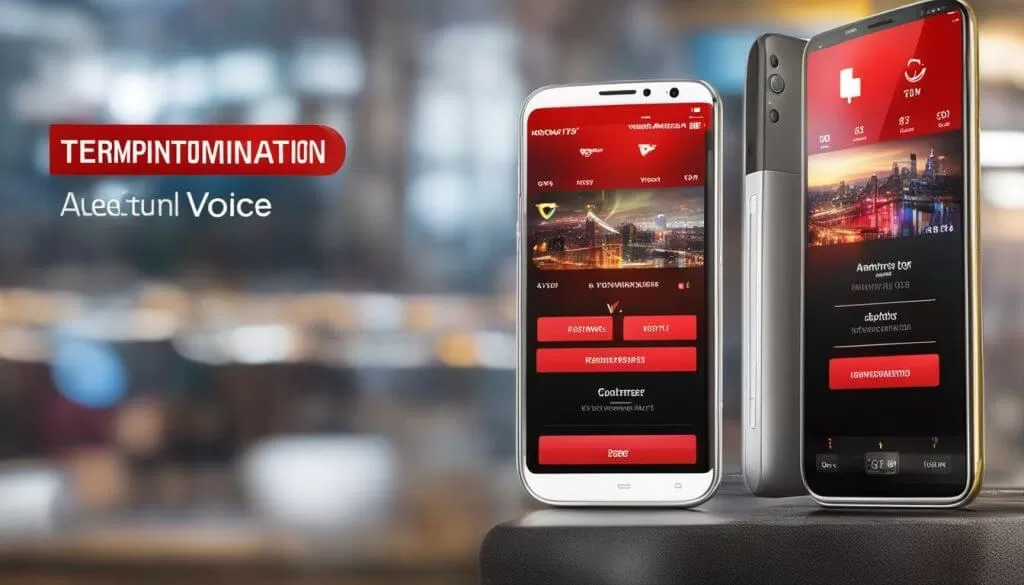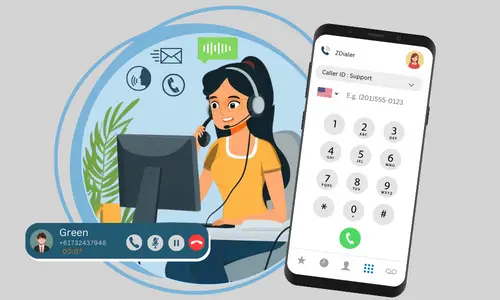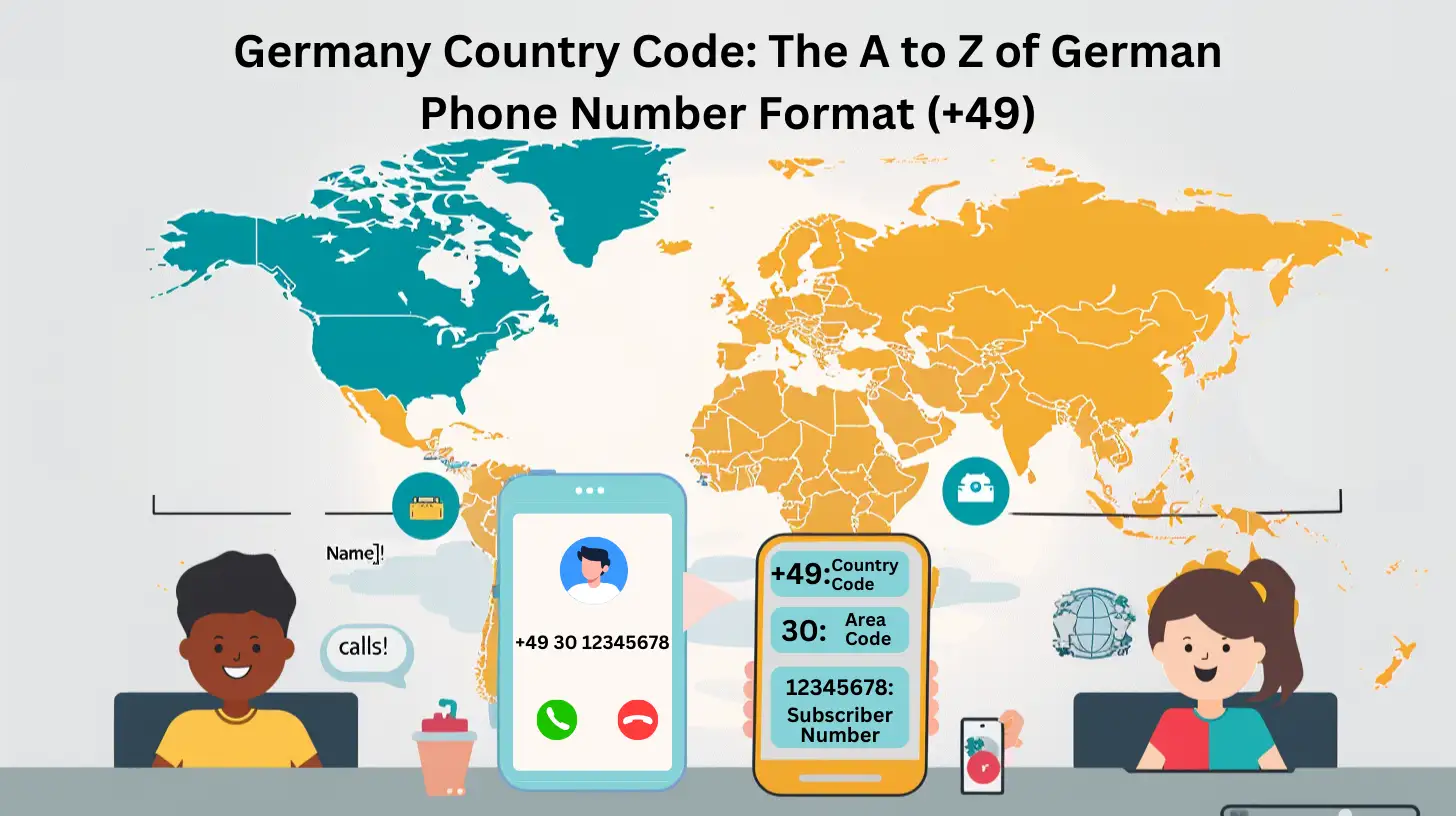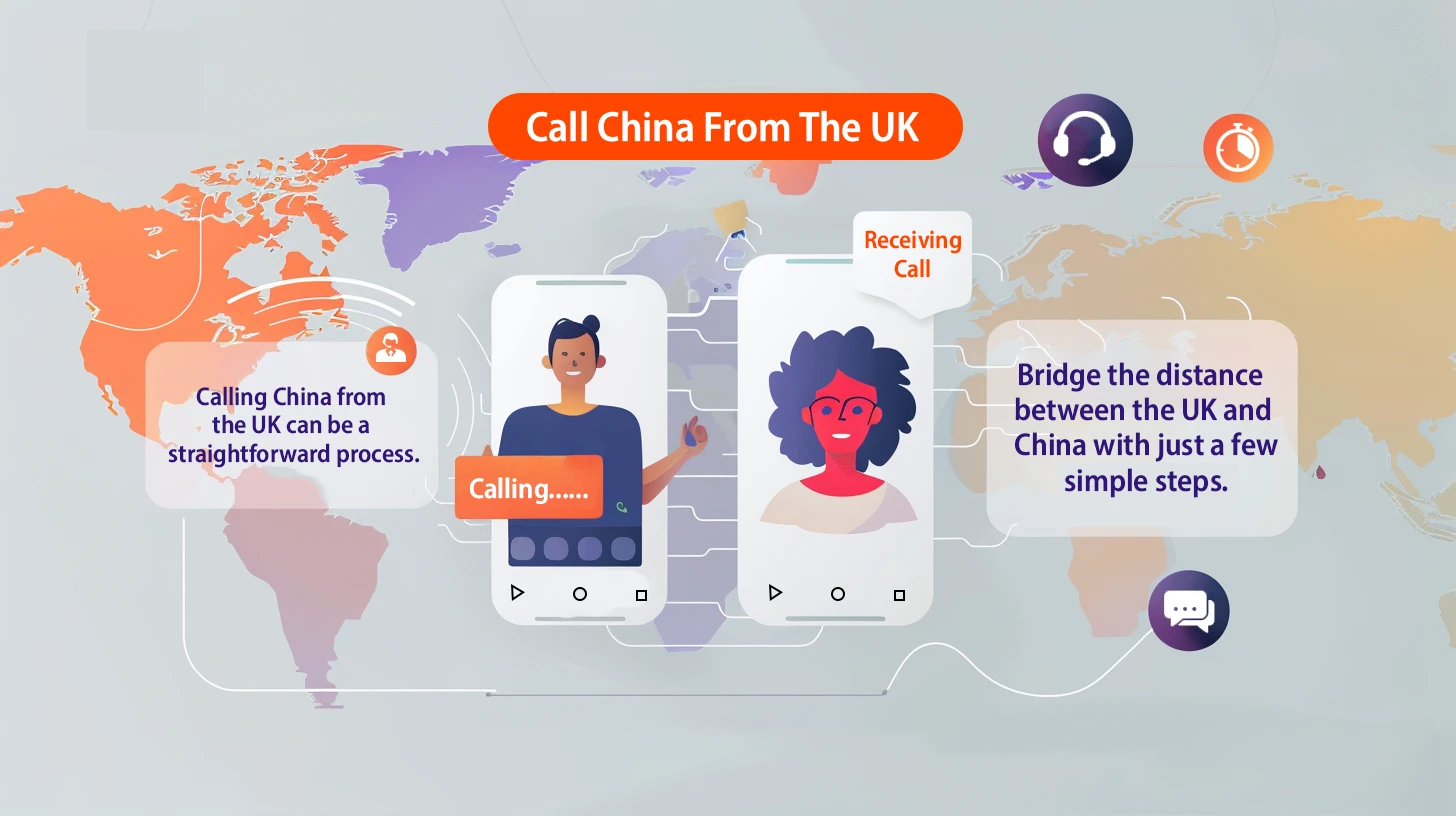In today’s fast-paced world, communication is key to the success of any organization. With the rise of remote work and global connectivity, businesses need reliable and high-quality telecom solutions to stay connected with their clients and partners. This is where CLI & Voice Termination Routes come in, providing seamless communication and enabling organizations to reach their goals. At My Country Mobile, we are experts in providing advanced telecom solutions and carrier-grade termination services.
- CLI & Voice Termination Routes are vital for seamless communication and high-quality voice calls.
- My Country Mobile is a trusted provider of advanced telecom solutions and carrier-grade termination services.
- Reliability, network coverage, and customer support are crucial factors in selecting the right telecom provider for your organization.
- Optimizing CLI & Voice Termination Routes can enhance call quality, completion rates, and overall customer satisfaction.
- The future of CLI & Voice Termination Routes is promising, with emerging technologies and regulatory developments shaping the telecommunications landscape.
Understanding CLI & Voice Termination Routes
When it comes to telecommunications, the concept of termination routes is key to ensuring reliable and high-quality voice communication. At My Country Mobile, we specialize in providing top-of-the-line CLI & Voice Termination routes to facilitate seamless communication for businesses and individuals.
Termination routes refer to the process by which the call data is transmitted from one network to another, ultimately allowing the call to reach its intended destination. Specifically, CLI (Caller Line Identification) Termination routes allow the receiving party to see the originating phone number, while Voice Termination routes ensure that the call quality is maintained throughout the transmission process.
At My Country Mobile, we understand the importance of both types of termination routes in enabling clear and uninterrupted voice communication. Our Voip-grade termination capabilities, combined with our extensive network coverage and industry expertise, allow us to deliver optimal CLI and voice Termination services for our clients.

Whether you’re a small business owner or a large enterprise, opting for CLI & Voice Termination services can bring a range of benefits. Enhanced call quality, improved call completion rates, and increased customer satisfaction are just a few advantages that you can expect from leveraging our telecom solutions.
At My Country Mobile, we pride ourselves on offering comprehensive CLI & Voice Termination services that are tailored to meet the unique needs of each client. From wholesale termination to route monitoring and traffic prioritization, we employ a range of strategies to optimize your telecom communication and ensure maximum efficiency and cost savings.
To learn more about our CLI & Voice Termination services and how we can help you achieve seamless communication, contact us today.
The Difference between Voice Termination and CLI Termination
In the field of telecommunications, understanding the difference between voice termination and CLI termination is crucial for ensuring seamless communication. While these terms are often used interchangeably, they actually refer to distinct aspects of the telecom termination process.
Voice Termination refers to the routing of voice traffic from one telecom network to another, enabling the completion of a call between two or more parties. This process involves transmitting the voice data over a network that provides reliable connectivity and low latency, ensuring high-quality voice communication. At My Country Mobile, we utilize carrier-grade termination capabilities to ensure the highest level of voice termination services for our clients.
CLI Termination involves the transmission of caller ID information from one telecom network to another, allowing the recipient of a call to identify the caller’s phone number and other identifying information. This information is essential for ensuring effective call management and reducing the potential for fraud or abuse. Our CLI termination services at My Country Mobile are designed to provide accurate and reliable caller ID information, enabling businesses to improve their call handling and customer service.
While voice termination and CLI termination are distinct processes, they are both critical components of telecom termination. By working with a provider that offers comprehensive telecom solutions, such as My Country Mobile, businesses can ensure reliable and high-quality communication for all their voice traffic needs.
Termination Routes
In addition to understanding voice termination and CLI termination, it’s important to understand how termination routes operate. Termination routes are the paths that voice and data traffic take to reach their intended destination. By utilizing multiple termination routes, businesses can ensure greater redundancy and minimize the risk of communication disruptions.
At My Country Mobile, we offer a range of termination routes to meet the unique needs of our clients. Our carrier-grade network infrastructure enables us to provide reliable and high-quality voice termination services, while our advanced routing algorithms ensure optimal performance and cost-effectiveness.

My Country Mobile offers comprehensive CLI & Voice Termination Routes solutions that provide numerous benefits for telecom termination. By utilizing our services, you can enjoy enhanced call quality, improved call completion rates, and increased customer satisfaction.
One major advantage of using CLI & Voice Termination Routes is their ability to improve call quality. Our termination routes are designed to optimize the delivery of voice traffic, ensuring that calls are clear and reliable. This can be especially beneficial for businesses that rely on voice communication to conduct their operations.
In addition, CLI & Voice Termination Routes can also improve call completion rates. When calls are terminated through our carrier-grade infrastructure, it increases the likelihood of successful call completion. This is because our network is optimized to handle high volumes of traffic, which can reduce the likelihood of dropped calls or signal loss.
Lastly, CLI & Voice Termination Routes can increase customer satisfaction by providing a seamless and reliable communication experience. Customers are more likely to stay loyal to a business that provides a high-quality communication experience, which can improve your business’s overall reputation and bottom line.

Overall, utilizing CLI & Voice Termination Routes can provide a range of benefits for businesses and individuals looking to improve their communication capabilities. At My Country Mobile, we offer carrier-grade termination solutions that are designed to meet your specific needs. Contact us today to learn more about how we can help your business improve its communication capabilities.
How My Country Mobile Provides CLI & Voice Termination Services
At My Country Mobile, we offer carrier-grade CLI & Voice Termination Services to businesses and organizations worldwide. Our telecom solutions are designed to provide reliable and high-quality voice communication, enabling seamless connectivity across different networks and devices.
Our CLI Services include Caller Line Identification, which enables businesses to display their phone number on the recipient’s caller ID. This feature is useful for businesses that want to establish a professional identity and improve their brand recognition. We also offer flexible routing options that allow businesses to prioritize call routes based on their needs and preferences. This ensures that calls are terminated through the best possible route, resulting in higher call completion rates and fewer dropped calls.
Our Voice Services include both inbound and outbound routing, ensuring that businesses can efficiently manage their voice communication needs. Our network is built on a carrier-grade infrastructure that provides high levels of reliability and security, ensuring that businesses can communicate with confidence. We also provide 24/7 customer support, ensuring that any issues or concerns are promptly addressed, and businesses can focus on their core operations.
Our comprehensive telecom solutions also include advanced features such as call recording, real-time monitoring, and analytics, enabling businesses to gain deeper insights into their voice communication and improve their performance. Our SIP trunking solutions enable businesses to integrate their voice and data communication, resulting in greater operational efficiency and cost savings.
At My Country Mobile, we are committed to providing our clients with the best possible telecom solutions. We work closely with businesses to understand their unique needs and develop customized solutions that deliver tangible results. Whether you need CLI or Voice Termination Services, we have the expertise and resources to help you achieve your communication goals.

At My Country Mobile, we understand the importance of cost-effective and robust telecom solutions for businesses of all sizes. That’s why we offer Wholesale Termination, a powerful communication solution that enables seamless and reliable CLI & Voice Termination Routes at affordable rates.
Wholesale Termination is a cost-effective way to manage high volumes of voice traffic without compromising on quality or reliability. It provides businesses with the flexibility to scale up or down their communication needs as per their requirements, making it an ideal solution for businesses of all sizes and types.
Our Wholesale Termination services are designed to provide businesses with high-quality termination solutions that are carrier-grade and reliable, allowing them to focus on their core business activities without worrying about telecom-related issues. With My Country Mobile, businesses get access to our global network of operators, ensuring that their communication needs are met with the highest level of quality and reliability.
We pride ourselves on providing businesses with the best possible communication solutions, and our Wholesale Termination services are no exception. Our team of telecom experts works closely with businesses to understand their communication needs and provide customized solutions that meet their specific requirements.
| Benefits of Wholesale Termination: |
|---|
| 1. Cost savings |
| 2. Scalability |
| 3. High-quality voice traffic |
| 4. Increased customer satisfaction |
| 5. Improved network performance |
Our Wholesale Termination services are designed to be compatible with various telecom protocols and platforms, making it easy for businesses to integrate them into their existing communication infrastructure. This means businesses can seamlessly manage their communication needs with minimal downtime or disruption.
At My Country Mobile, we are committed to providing businesses with the best possible communication solutions. Our Wholesale Termination services are just one of the many ways we help businesses optimize their communication infrastructure and achieve their business objectives.

Choose My Country Mobile for cost-effective and reliable CLI & Voice Termination Routes. Contact us today to learn more about our Wholesale Termination services.
Choosing the Right Telecom Provider for CLI & Voice Termination Routes
When it comes to selecting the right telecom provider for CLI & Voice Termination Routes, there are several key factors to consider. At My Country Mobile, we understand that choosing the right partner is crucial to ensuring reliable and high-quality voice communication. Here are some tips to help you make an informed decision:
Reliability
Reliability is critical when it comes to telecom solutions. You want a provider that offers carrier-grade termination and has a proven track record of delivering high-quality voice communication. At My Country Mobile, we pride ourselves on our Tier 1 carrier relationships and redundant network architecture, which ensure reliable and uninterrupted service for our clients.
Network Coverage
Another important consideration is network coverage. You want a provider that has extensive coverage, both domestically and internationally, to ensure that your voice communication can reach any destination. My Country Mobile offers a vast network of global carriers, enabling us to provide reliable and cost-effective voice termination solutions.
Customization
Customization is crucial when it comes to telecom solutions. You want a provider that can tailor their services to meet your specific business needs. At My Country Mobile, we offer flexible and scalable telecom solutions, including wholesale termination and SIP trunking, to help you maximize efficiency and minimize costs.
Customer Support
Finally, customer support is essential when it comes to telecom solutions. You want a provider that offers responsive and knowledgeable support to ensure that any issues can be resolved quickly. At My Country Mobile, we have a team of dedicated support professionals available 24/7 to provide assistance and support to our clients.
By considering these factors and partnering with a reliable and customer-focused provider like My Country Mobile, you can ensure that your CLI & Voice Termination Routes are optimized for seamless and high-quality voice communication.

At My Country Mobile, we understand that every business has unique communication needs. That’s why we offer customizable telecom solutions that cater to your specific requirements. Here are some practical tips and strategies for optimizing CLI & Voice Termination Routes:
1. Route monitoring
Regularly monitoring your termination routes can help identify and address issues before they escalate. At My Country Mobile, our advanced monitoring tools provide real-time insights into call quality, uptime, and network performance, allowing you to optimize your routes and ensure reliable communication.
2. Traffic prioritization
Ensuring that your critical business calls receive high-priority routing can significantly improve call completion rates and customer satisfaction. Our CLI & Voice Termination Routes allow you to customize your routing preferences, ensuring that your most important calls always receive priority treatment.
3. Security measures
Protecting your business communication from fraud, spam, and other security threats is crucial. At My Country Mobile, we provide robust security measures such as fraud detection protocols, spam filtering, and encrypted communication channels to safeguard your communication and preserve your business reputation.
By optimizing your CLI & Voice Termination Routes with these strategies, you can enhance your communication capabilities and increase efficiency in your operations.

At My Country Mobile, we are always keeping a close eye on the latest trends and innovations in CLI & Voice Termination Routes to ensure that our telecom solutions remain at the cutting edge of the industry.
One of the most exciting developments in recent years is the integration of artificial intelligence into telecommunications. AI-powered systems can analyze call data in real-time, enabling carriers to optimize routing, improve call quality, and prevent fraud.
Another trend that is gaining momentum is the adoption of cloud-based solutions for termination services. By leveraging cloud technology, carriers can offer greater scalability, flexibility, and cost savings to their customers.
In addition, SIP trunking is becoming increasingly popular as a way to streamline communications and reduce costs. SIP trunking enables voice, video, and messaging traffic to be transmitted over a single IP connection, eliminating the need for multiple physical connections and hardware.
These trends and innovations are poised to transform the telecommunications landscape in the coming years, and My Country Mobile is well-positioned to provide our clients with the most advanced and reliable telecom solutions available.

As a leading provider of CLI & Voice Termination Routes, we are committed to staying ahead of the curve and delivering the highest quality service to our customers. Contact us today to learn more about how we can help you optimize your telecom solutions.
The Future of CLI & Voice Termination Routes
As a telecom termination provider, we at My Country Mobile understand the need to stay on top of emerging technologies and trends in the industry. The future of CLI & Voice Termination Routes looks promising, with innovative solutions that aim to enhance communication and improve the customer experience.
Artificial Intelligence (AI)
One major trend in the industry is the integration of artificial intelligence into telecom solutions. AI-powered voice recognition and natural language processing technologies can enhance the accuracy of call routing and reduce call wait times, leading to a more seamless communication experience. My Country Mobile is exploring the potential of AI in our telecom services to provide more efficient and effective solutions for our customers.
Cloud-based Solutions
Another trend is the shift towards cloud-based solutions for CLI & Voice Termination Routes. Cloud-based services offer greater flexibility, scalability, and cost-effectiveness, allowing businesses to easily expand their telecom services without the need for additional hardware or infrastructure. My Country Mobile is constantly innovating our telecom services to leverage cloud technology and provide our customers with more streamlined and customizable solutions.

SIP trunking is another trend that is changing the telecommunications landscape. SIP trunking eliminates the need for traditional phone lines, allowing businesses to route voice and data communications over a single internet connection. This results in significant cost savings and greater flexibility in telecom management. My Country Mobile offers SIP trunking services to help businesses optimize their communication infrastructure and reduce costs.
As the telecommunications industry continues to evolve, My Country Mobile remains committed to providing reliable and innovative CLI & Voice Termination Routes. We believe that these emerging trends will help us better serve our customers and provide them with the most advanced and efficient telecom solutions available.
My Country Mobile: Your Trusted Partner for CLI & Voice Termination Routes
When it comes to CLI & Voice Termination Routes, trusting a reliable and experienced partner is essential. At My Country Mobile, we pride ourselves on delivering carrier-grade termination solutions that ensure seamless and high-quality communication for businesses of all sizes.
Our telecom solutions are designed to meet the unique needs and requirements of each customer, with a focus on flexibility, scalability, and affordability. We offer a range of termination routes, from CLI to voice, and our advanced routing technology ensures optimal call quality and completion rates.
At My Country Mobile, we understand the importance of network reliability and customer support. Our advanced network infrastructure and partnerships with leading carriers ensure that our customers receive the highest level of service and connectivity. Our dedicated support team is available 24/7 to assist with any issues or questions that may arise.
With My Country Mobile as your partner for CLI & Voice Termination Routes, you can expect:
- Carrier-grade termination solutions
- Flexible and scalable telecom services
- Advanced routing technology for optimal call quality and completion rates
- Reliable network infrastructure and connectivity
- 24/7 customer support
Choose My Country Mobile as your telecom partner and experience the benefits of seamless and reliable communication. Contact us today to learn more about our CLI & Voice Termination Routes and how we can help enhance your business communication.

At My Country Mobile, our ultimate goal is to ensure customer satisfaction by delivering reliable and high-quality telecom solutions. We take pride in providing our clients with seamless CLI and voice Termination Routes that enable them to communicate with confidence and efficiency. But don’t just take our word for it – here are some testimonials from satisfied My Country Mobile clients:
| Client Name | Industry | Testimonial |
|---|---|---|
| ABC Company | Retail | “Thanks to My Country Mobile, our call completion rates have significantly improved, and our customers are happier than ever.” |
| XYZ Corp | Finance | “We were facing call quality issues with our previous telecom provider, but since switching to My Country Mobile, our calls are crystal-clear and our team can communicate without any disruptions.” |
| 123 Enterprises | Technology | “My Country Mobile offers unparalleled support and flexibility, and their wholesale termination solutions have saved us a significant amount of money without compromising on quality.” |
These are just a few examples of the positive impact that My Country Mobile CLI & Voice Termination Routes have had on businesses across various industries. We are committed to continuing to provide top-notch telecom solutions that exceed our clients’ expectations and contribute to their success.

In summary, CLI & Voice Termination Routes are crucial components of modern telecommunications, enabling reliable and high-quality voice communication. At My Country Mobile, we are proud to offer carrier-grade termination and comprehensive telecom solutions that ensure seamless communication for businesses of all sizes.
We believe in providing our clients with the best possible telecom services, focusing on reliability, network coverage, and customer support. Our commitment to delivering outstanding results has earned us the trust of numerous satisfied clients who have witnessed the positive impact of our on their communication.
Partner with Us for Your Telecom Solutions Needs
Whether you are looking for wholesale termination or carrier-grade termination, My Country Mobile has the expertise and resources to deliver top-quality telecom solutions. Our team of experienced professionals puts your needs first, working closely with you to develop customized communication strategies that address your unique requirements.
With our industry knowledge, cutting-edge technology, CLI & Voice Termination Routes and commitment to customer satisfaction, we are confident that we can provide you with the best experience possible. Contact us today to learn more about our services and how we can help you enhance your business communication.
Choose My Country Mobile as your trusted partner for CLI & Voice Termination Routes and enjoy seamless communication that drives business success.






















